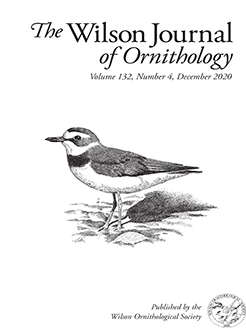Point counts are the most commonly employed methodology in bird surveys. Survey points are usually spaced ≥250 m apart to prevent double counting. In cases where they are used in small (<200 ha) geographic areas, this spacing results in a very small sample size, which may substantially underestimate species richness. Alternatively, locating survey points closer together may produce more complete species lists, but result in excessive double counting of individuals, yielding biased population estimates. We investigated this tradeoff in surveys of breeding birds in predominantly grassland habitats in 5 small (73–114 ha) national park units with survey points spaced at 100 m intervals. Sampling at this distance captured 70–90% of the estimated species richness at 4 of the 5 parks. Approximately half of the species observed were rare, occurring at ≤3 sites. Approximately one-third of all birds were observed far enough from the survey point to be counted at another point. Based on rarefaction curves, increasing the distance between survey points from 100 m to 200 m would result in a 27–48% reduction of observed species. Conducting multi-species bird surveys in small geographic areas using single-visit point counts that are widely spaced (e.g., ≥250 m) will likely underestimate species richness, even with the use of statistical species richness estimators. As a result, rare species will be undersampled.
How to translate text using browser tools
14 September 2021
Spacing of point counts for grassland bird surveys in small geographical areas: Biases and tradeoffs
Lloyd W. Morrison,
David G. Peitz
ACCESS THE FULL ARTICLE
2nd-order jackknife
abundance-based coverage
Chao2
distance sampling
incidence-based coverage
rarefaction
species richness estimation





